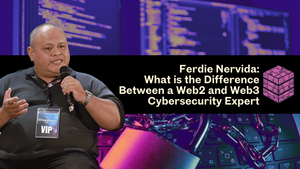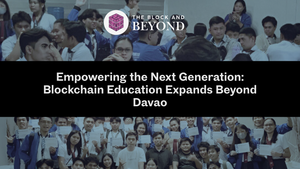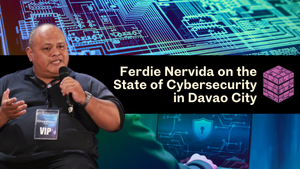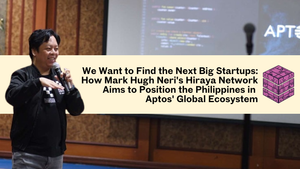How an architect-turned-marketer helped reimagine Pixelmon through empathy, structure, and monster nostalgia.
The Web3 space often moves at the speed of hype, but sustaining attention, let alone trust, requires more than token drops and flashy trailers. For Matthew Wong-Stewart, the key to rebuilding Pixelmon wasn’t just about PR spin or marketing mechanics. It was about finding the emotional thread that made people care in the first place, and then anchoring it in structure, strategy, and sincere storytelling.
In Singapore, The Block and Beyond sat down with Wong-Stewart for an exclusive scoop on how Pixelmon evolved, what drives his marketing playbook, and why data, design, and real-world empathy all matter when building a brand that lasts.
Now the marketing lead for gaming at MON Co., Wong-Stewart is spearheading Pixelmon’s transformation from a cautionary tale to a cross-media IP with serious potential. Along the way, he’s drawn from his roots in architecture, his formative years at Riot Games, and a career spent navigating both creative execution and strategic planning, all to shape a more grounded, human approach to Web3 marketing.
The Pitch That Cuts Through the Noise
When asked to describe his job in a way that a five-year-old could understand, Wong-Stewart didn’t hesitate.
“Our company makes video games, and we have a cartoon, an anime series. My job is to create things that would make people interested in either playing the game or watching that series.”
It’s a simplified explanation, but also a deeply accurate one, especially considering Pixelmon’s current strategy. Rather than overcomplicate the narrative with blockchain buzzwords, the team is focusing on reigniting the same sense of wonder that once drew players to Pokémon and Digimon. This ability to distill complex ecosystems into accessible ideas is what powers his marketing lens.
That clarity of message reflects something bigger: a belief that storytelling and structure must go hand in hand.
Reorienting Pixelmon’s Core
Pixelmon wasn’t always on stable ground. Its 2022 NFT launch, met with backlash and skepticism, became a symbol of crypto overpromise. But as Wong-Stewart explains, the original vision had potential. It just needed the right leadership to realize it.
“Pixelmon was a very ambitious NFT project that captured a lot of hype… it quickly became that cautionary tale. Our current CEO, Giulio Xiloyannis, took over and started to rebuild the core identity of Pixelmon.”
Under new direction, the brand underwent a full visual and strategic overhaul. Outdated NFTs were redesigned (save for the now-iconic “Kevin”), a clearer roadmap was developed, and the focus shifted from speculation to gameplay and narrative. Pixelmon would become more than an NFT drop. It would become a universe.
“Be Data-Informed, Not Data-Driven”: A Philosophy from Riot Days
A central lesson that shapes Wong-Stewart’s approach today came from his time at Riot Games, the studio behind League of Legends and Arcane, is known for its deep focus on player-first iteration.
“To be data-driven is to do what the data tells you. But to be data-informed means using that data to guide your thinking, not dictate it,” he said. “Keep an open mind and try to see what other possibilities could either work better, or things we might have missed.”
This principle helped him avoid common traps, like overusing a viral tactic until it burns out. In his Garena days, a FIFA campaign generated massive engagement through gamified social posts. But when repeated too often, it lost its spark.
“We were overusing it. The rewards weren’t interesting anymore. The community was shrinking. We had to slow down and make the rewards meaningful again.”
The lesson stuck: trends don’t scale if they lack substance. That willingness to learn, recalibrate, and reframe is what now guides his work with Pixelmon.
It's About People, Not Just Products
One of the biggest challenges in Web3, according to Wong-Stewart, is understanding how audiences differ and resisting the urge to treat all users the same.
“People who are interested in Web3 have very different wants and needs than someone purely interested in gaming. It's not about changing how you market. It’s about knowing who you’re talking to and adjusting the message.”
Whether the motivation is collectability, ownership, or identity, his team carefully studies how to meet users where they are, whether they’re longtime gamers, anime fans, or NFT collectors.
Behind the IP: Infrastructure, Community, and the $MON Economy
Under MON Co., Pixelmon isn’t just scaling creative storytelling. It’s backing it with infrastructure. The project now spans multiple game titles, including Warden’s Ascent, a turn-based mobile RPG, and Pixelmon TCG, a fast-paced trading card game. Each title contributes to a growing monster universe rooted in player progression, team strategy, and distinct gameplay loops.
Central to this is $MON, Pixelmon’s governance and utility token, which fuels in-game transactions, community incentives, and IP co-creation. Beyond serving as a digital currency, $MON gives players real influence, from staking mechanics to governance proposals, bridging fun with function in Web3.
The anime expansion, upcoming token-gated features, and multi-platform releases reflect what Wong-Stewart calls a “modular marketing system,” one where community, product, and content evolve together under a clear brand framework.
Lessons from an Architect
Wong-Stewart originally trained as an architect, a past life he jokingly says he’s “shoved into a dark corner.” But the discipline of design thinking still underpins his work.
“Architecture helped with my foundation in content and design. It trained me to think in systems, in structure. That mindset stuck with me.”
His marketing workflow reflects that structured mindset: 50% of his time goes to research, 25% to strategy, and 25% to execution. It’s a workflow built not just to react to trends but to anticipate and shape them.
Looking Ahead: Build What You Want to Last
If you gave Matthew limited resources and asked him to launch an IP from scratch, his answer is simple: Start with a mobile game. Not for short-term monetization, but because it gives players a way to interact, engage, and become part of the world.
“Gaming is immersive. It’s not just watching something... you’re part of it. That’s how you build a long-term IP."
That philosophy echoes across Pixelmon’s broader vision: build slowly, listen often, and craft something that players actually want to return to, not just hype up and abandon.
In a space where virality is often confused for value, Wong-Stewart is offering something quieter but ultimately more sustainable: a marketing approach grounded in empathy, structure, and story. He’s not just helping to rebuild a brand. He’s helping redefine what responsible IP building in Web3 can look like.
In a space that rewards hype, Wong-Stewart is building for heart.










